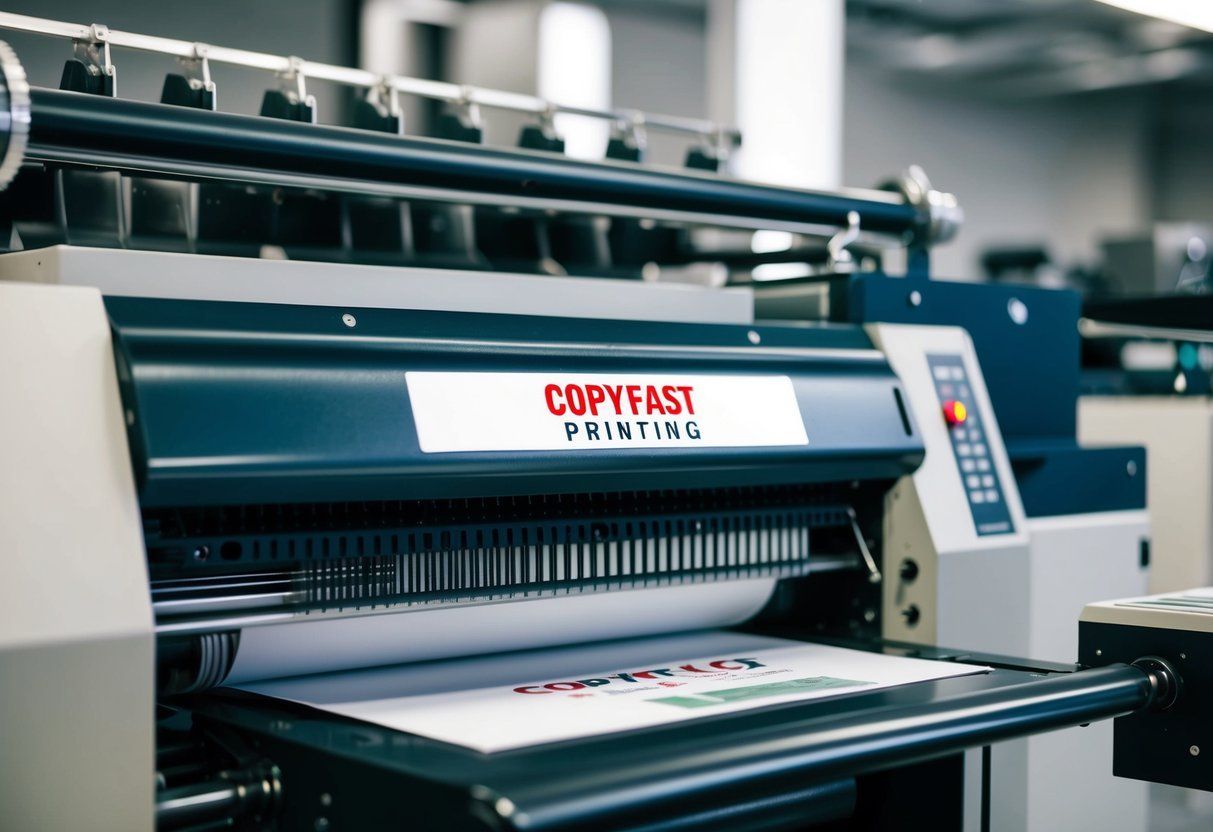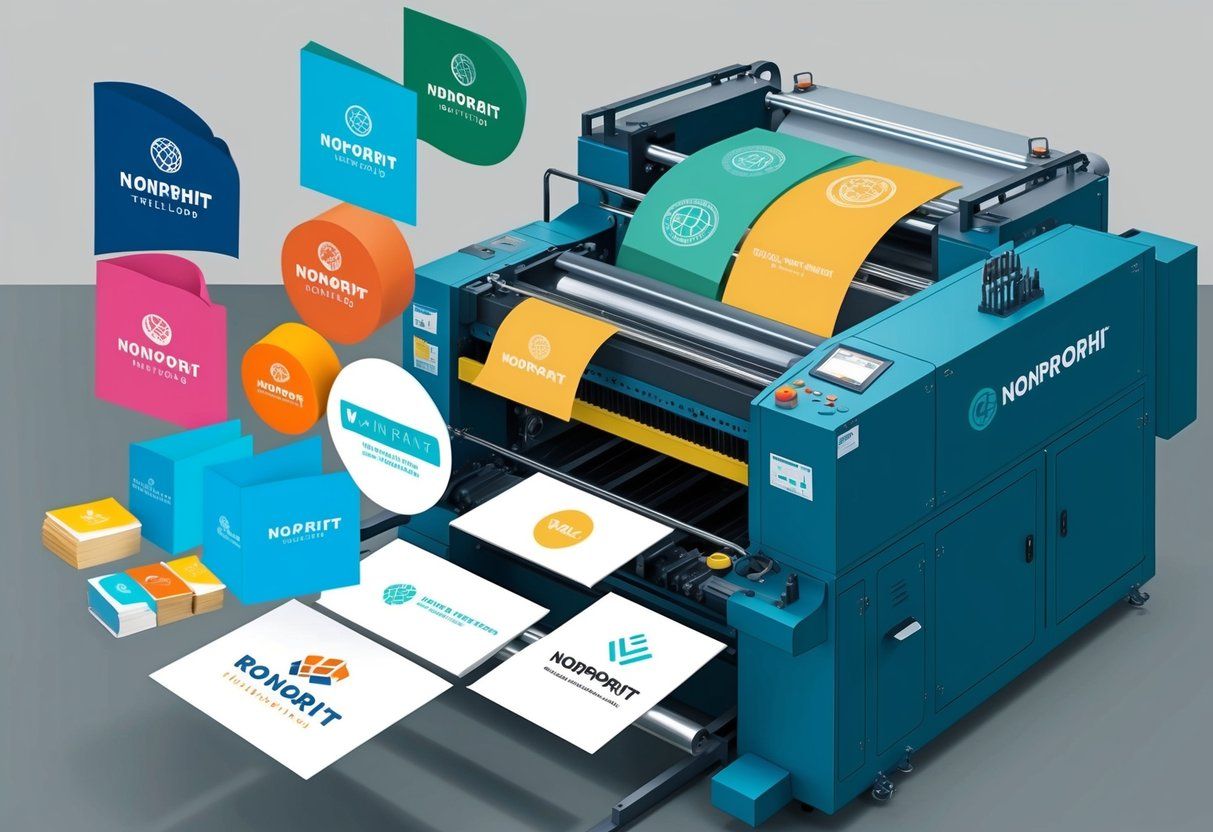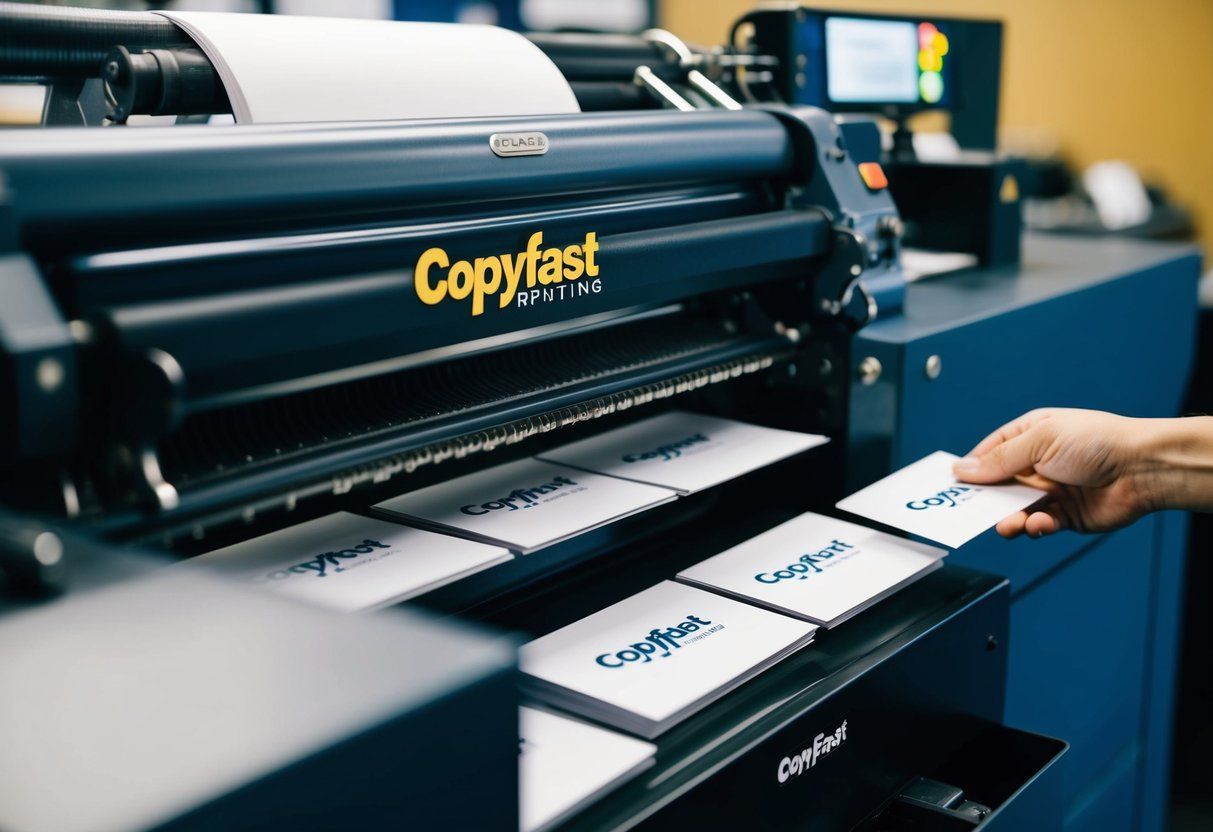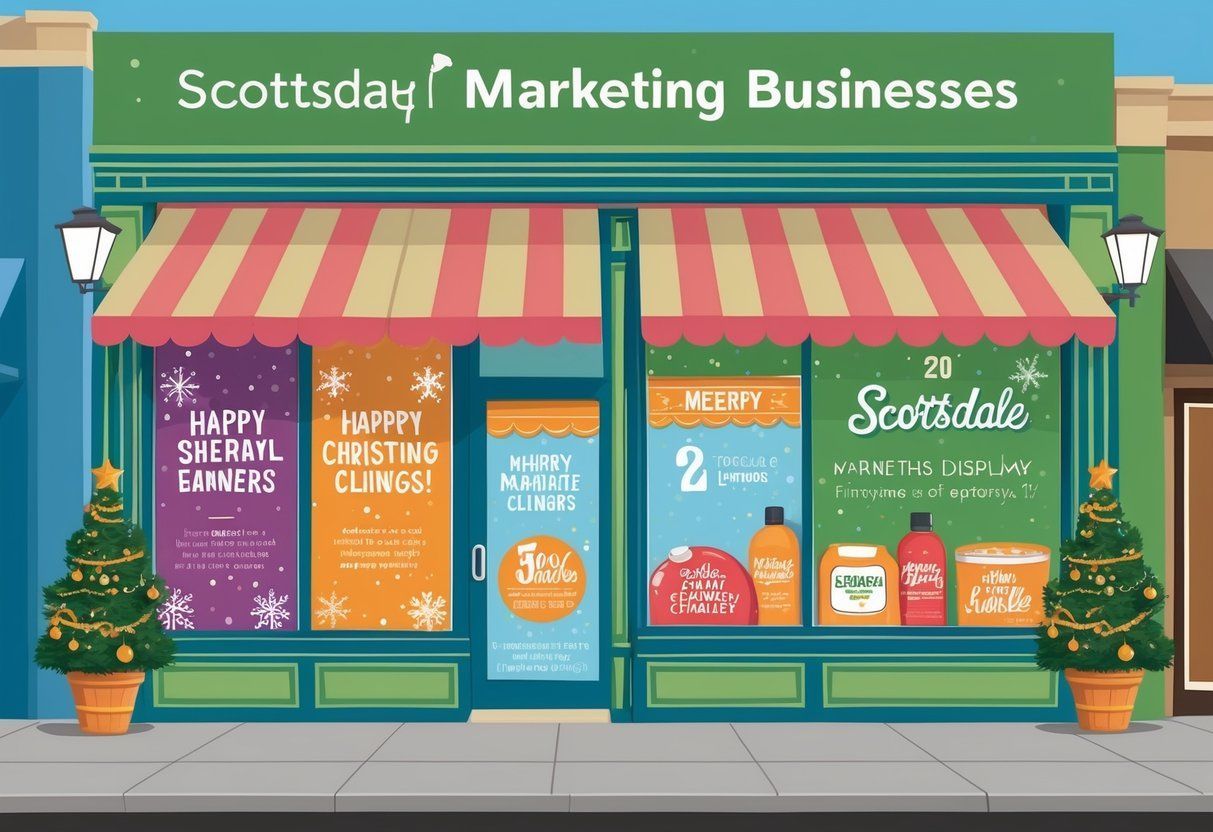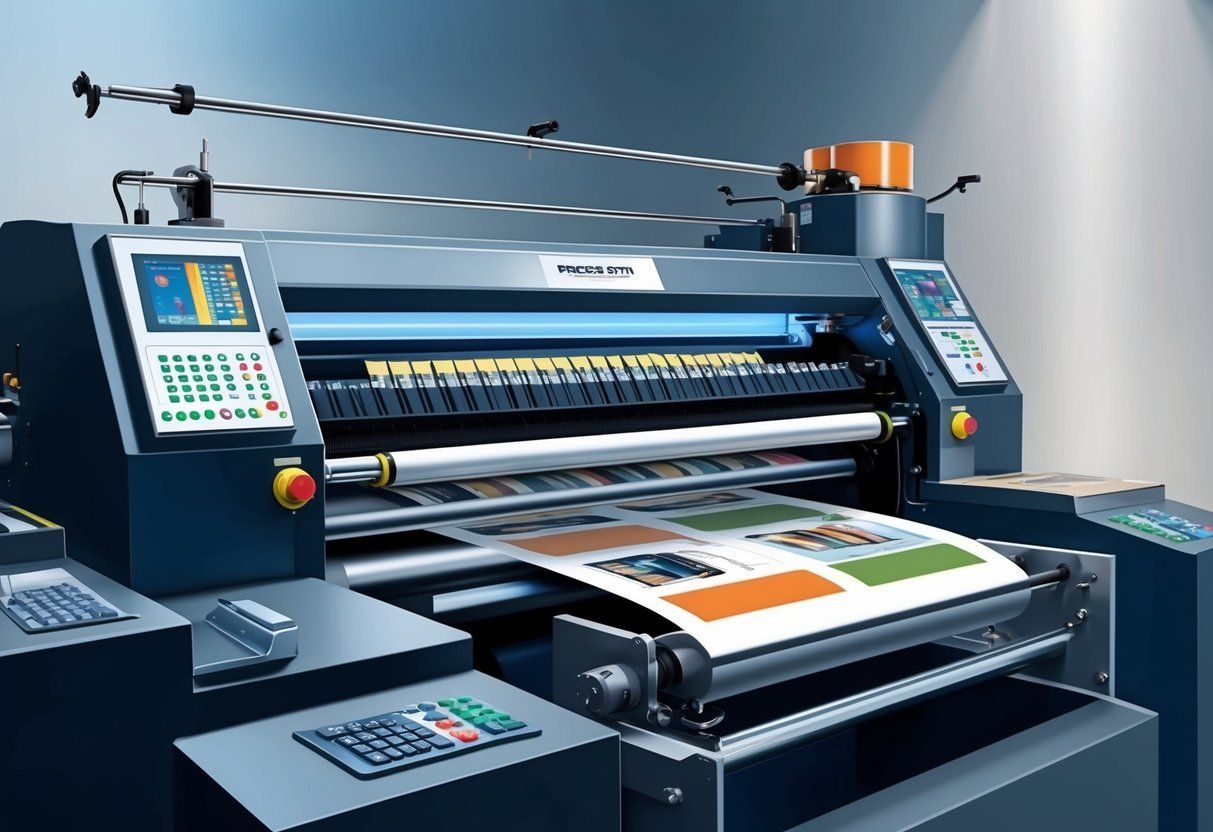Scottsdale Print Shop ) Mesa Print Shop ) Tempe Print Shop ) Phoenix Print Shop ) DC Ranch Print Shop ) Chandler Print Shop ) Peoria Print Shop ) Fountain Hills Print Shop ) Sun City Print Shop ) Glendale Print Shop ) Paradise Valley Print Shop ) Goodyear Print Shop ) Queen Creek Print Shop ) Avondale Print Shop ) Desert Ridge Print Shop ) Apache Junction Print Shop ) North Scottsdale Print Shop ) Pinnacle Peak Print Shop ) Grayawk Print Shop ) Kierland Print Shop ) Windsong Print Shop ) Mcdowell Mountain Ranch Print Shop ) Gainey Ranch Print Shop ) McCormick Ranch Print Shop ) Deer Valley Print Shop ) Arcadia Print Shop ) Troon Print Shop ) Silverleaf Print Shop ) Cave Creek Print Shop ) Old Town Print Shop ) South Scottsdale Print Shop ) Ancala Print Shop ) Central Phoenix Print Shop ) Carefree Print Shop ) Toleson Print Shop ) Ironwood Village Print Shop ) WIndgate Ranch Print Shop ) Northsight Print Shop ) Shea Print Shop ) Tatum Ranch Print Shop ) Casa Grande Print Shop ) Gilbert Print Shop ) Suprise Print Shop ) Buckeye Print Shop ) Scottsdale Banner Printing ) Mesa Banner Printing ) Tempe Banner Printing ) Phoenix Banner Printing ) DC Ranch Banner Printing ) Chandler Banner Printing ) Peoria Banner Printing ) Fountain Hills Banner Printing ) Sun City Banner Printing ) Glendale Banner Printing ) Paradise Valley Banner Printing ) Goodyear Banner Printing ) Queen Creek Banner Printing ) Avondale Banner Printing ) Desert Ridge Banner Printing ) Apache Junction Banner Printing ) North Scottsdale Banner Printing ) Pinnacle Peak Banner Printing ) Grayawk Banner Printing ) Kierland Banner Printing ) Windsong Banner Printing ) Mcdowell Mountain Ranch Banner Printing ) Gainey Ranch Banner Printing ) McCormick Ranch Banner Printing ) Deer Valley Banner Printing ) Arcadia Banner Printing ) Troon Banner Printing ) Silverleaf Banner Printing ) Cave Creek Banner Printing ) Old Town Banner Printing ) South Scottsdale Banner Printing ) Ancala Banner Printing ) Central Phoenix Banner Printing ) Carefree Banner Printing ) Toleson Banner Printing ) Ironwood Village Banner Printing ) WIndgate Ranch Banner Printing ) Northsight Banner Printing ) Shea Banner Printing ) Tatum Ranch Banner Printing ) Casa Grande Banner Printing ) Gilbert Banner Printing ) Suprise Banner Printing ) Buckeye Banner Printing ) Scottsdale Book Binding ) Mesa Book Binding ) Tempe Book Binding ) Phoenix Book Binding ) DC Ranch Book Binding ) Chandler Book Binding ) Peoria Book Binding ) Fountain Hills Book Binding ) Sun City Book Binding ) Glendale Book Binding ) Paradise Valley Book Binding ) Goodyear Book Binding ) Queen Creek Book Binding ) Avondale Book Binding ) Desert Ridge Book Binding ) Apache Junction Book Binding ) North Scottsdale Book Binding ) Pinnacle Peak Book Binding ) Grayawk Book Binding ) Kierland Book Binding ) Windsong Book Binding ) Mcdowell Mountain Ranch Book Binding ) Gainey Ranch Book Binding ) McCormick Ranch Book Binding ) Deer Valley Book Binding ) Arcadia Book Binding ) Troon Book Binding ) Silverleaf Book Binding ) Cave Creek Book Binding ) Old Town Book Binding ) South Scottsdale Book Binding ) Ancala Book Binding ) Central Phoenix Book Binding ) Carefree Book Binding ) Toleson Book Binding ) Ironwood Village Book Binding ) WIndgate Ranch Book Binding ) Northsight Book Binding ) Shea Book Binding ) Tatum Ranch Book Binding ) Casa Grande Book Binding ) Gilbert Book Binding ) Suprise Book Binding ) Buckeye Book Binding ) Scottsdale Booklet Printing ) Mesa Booklet Printing ) Tempe Booklet Printing ) Phoenix Booklet Printing ) DC Ranch Booklet Printing ) Chandler Booklet Printing ) Peoria Booklet Printing ) Fountain Hills Booklet Printing ) Sun City Booklet Printing ) Glendale Booklet Printing ) Paradise Valley Booklet Printing ) Goodyear Booklet Printing ) Queen Creek Booklet Printing ) Avondale Booklet Printing ) Desert Ridge Booklet Printing ) Apache Junction Booklet Printing ) North Scottsdale Booklet Printing ) Pinnacle Peak Booklet Printing ) Grayawk Booklet Printing ) Kierland Booklet Printing ) Windsong Booklet Printing ) Mcdowell Mountain Ranch Booklet Printing ) Gainey Ranch Booklet Printing ) McCormick Ranch Booklet Printing ) Deer Valley Booklet Printing ) Arcadia Booklet Printing ) Troon Booklet Printing ) Silverleaf Booklet Printing ) Cave Creek Booklet Printing ) Old Town Booklet Printing ) South Scottsdale Booklet Printing ) Ancala Booklet Printing ) Central Phoenix Booklet Printing ) Carefree Booklet Printing ) Toleson Booklet Printing ) Ironwood Village Booklet Printing ) WIndgate Ranch Booklet Printing ) Northsight Booklet Printing ) Shea Booklet Printing ) Tatum Ranch Booklet Printing ) Casa Grande Booklet Printing ) Gilbert Booklet Printing ) Suprise Booklet Printing ) Buckeye Booklet Printing ) Scottsdale Brochure Printing ) Mesa Brochure Printing ) Tempe Brochure Printing ) Phoenix Brochure Printing ) DC Ranch Brochure Printing ) Chandler Brochure Printing ) Peoria Brochure Printing ) Fountain Hills Brochure Printing ) Sun City Brochure Printing ) Glendale Brochure Printing ) Paradise Valley Brochure Printing ) Goodyear Brochure Printing ) Queen Creek Brochure Printing ) Avondale Brochure Printing ) Desert Ridge Brochure Printing ) Apache Junction Brochure Printing ) North Scottsdale Brochure Printing ) Pinnacle Peak Brochure Printing ) Grayawk Brochure Printing ) Kierland Brochure Printing ) Windsong Brochure Printing ) Mcdowell Mountain Ranch Brochure Printing ) Gainey Ranch Brochure Printing ) McCormick Ranch Brochure Printing ) Deer Valley Brochure Printing ) Arcadia Brochure Printing ) Troon Brochure Printing ) Silverleaf Brochure Printing ) Cave Creek Brochure Printing ) Old Town Brochure Printing ) South Scottsdale Brochure Printing ) Ancala Brochure Printing ) Central Phoenix Brochure Printing ) Carefree Brochure Printing ) Toleson Brochure Printing ) Ironwood Village Brochure Printing ) WIndgate Ranch Brochure Printing ) Northsight Brochure Printing ) Shea Brochure Printing ) Tatum Ranch Brochure Printing ) Casa Grande Brochure Printing ) Gilbert Brochure Printing ) Suprise Brochure Printing ) Buckeye Brochure Printing ) Scottsdale Business Card Printing ) Mesa Business Card Printing ) Tempe Business Card Printing ) Phoenix Business Card Printing ) DC Ranch Business Card Printing ) Chandler Business Card Printing ) Peoria Business Card Printing ) Fountain Hills Business Card Printing ) Sun City Business Card Printing ) Glendale Business Card Printing ) Paradise Valley Business Card Printing ) Goodyear Business Card Printing ) Queen Creek Business Card Printing ) Avondale Business Card Printing ) Desert Ridge Business Card Printing ) Apache Junction Business Card Printing ) North Scottsdale Business Card Printing ) Pinnacle Peak Business Card Printing ) Grayawk Business Card Printing ) Kierland Business Card Printing ) Windsong Business Card Printing ) Mcdowell Mountain Ranch Business Card Printing ) Gainey Ranch Business Card Printing ) McCormick Ranch Business Card Printing ) Deer Valley Business Card Printing ) Arcadia Business Card Printing ) Troon Business Card Printing ) Silverleaf Business Card Printing ) Cave Creek Business Card Printing ) Old Town Business Card Printing ) South Scottsdale Business Card Printing ) Ancala Business Card Printing ) Central Phoenix Business Card Printing ) Carefree Business Card Printing ) Toleson Business Card Printing ) Ironwood Village Business Card Printing ) WIndgate Ranch Business Card Printing ) Northsight Business Card Printing ) Shea Business Card Printing ) Tatum Ranch Business Card Printing ) Casa Grande Business Card Printing ) Gilbert Business Card Printing ) Suprise Business Card Printing ) Buckeye Business Card Printing ) Scottsdale Catalog Printing ) Mesa Catalog Printing ) Tempe Catalog Printing ) Phoenix Catalog Printing ) DC Ranch Catalog Printing ) Chandler Catalog Printing ) Peoria Catalog Printing ) Fountain Hills Catalog Printing ) Sun City Catalog Printing ) Glendale Catalog Printing ) Paradise Valley Catalog Printing ) Goodyear Catalog Printing ) Queen Creek Catalog Printing ) Avondale Catalog Printing ) Desert Ridge Catalog Printing ) Apache Junction Catalog Printing ) North Scottsdale Catalog Printing ) Pinnacle Peak Catalog Printing ) Grayawk Catalog Printing ) Kierland Catalog Printing ) Windsong Catalog Printing ) Mcdowell Mountain Ranch Catalog Printing ) Gainey Ranch Catalog Printing ) McCormick Ranch Catalog Printing ) Deer Valley Catalog Printing ) Arcadia Catalog Printing ) Troon Catalog Printing ) Silverleaf Catalog Printing ) Cave Creek Catalog Printing ) Old Town Catalog Printing ) South Scottsdale Catalog Printing ) Ancala Catalog Printing ) Central Phoenix Catalog Printing ) Carefree Catalog Printing ) Toleson Catalog Printing ) Ironwood Village Catalog Printing ) WIndgate Ranch Catalog Printing ) Northsight Catalog Printing ) Shea Catalog Printing ) Tatum Ranch Catalog Printing ) Casa Grande Catalog Printing ) Gilbert Catalog Printing ) Suprise Catalog Printing ) Buckeye Catalog Printing ) Scottsdale Commercial Printing ) Mesa Commercial Printing ) Tempe Commercial Printing ) Phoenix Commercial Printing ) DC Ranch Commercial Printing ) Chandler Commercial Printing ) Peoria Commercial Printing ) Fountain Hills Commercial Printing ) Sun City Commercial Printing ) Glendale Commercial Printing ) Paradise Valley Commercial Printing ) Goodyear Commercial Printing ) Queen Creek Commercial Printing ) Avondale Commercial Printing ) Desert Ridge Commercial Printing ) Apache Junction Commercial Printing ) North Scottsdale Commercial Printing ) Pinnacle Peak Commercial Printing ) Grayawk Commercial Printing ) Kierland Commercial Printing ) Windsong Commercial Printing ) Mcdowell Mountain Ranch Commercial Printing ) Gainey Ranch Commercial Printing ) McCormick Ranch Commercial Printing ) Deer Valley Commercial Printing ) Arcadia Commercial Printing ) Troon Commercial Printing ) Silverleaf Commercial Printing ) Cave Creek Commercial Printing ) Old Town Commercial Printing ) South Scottsdale Commercial Printing ) Ancala Commercial Printing ) Central Phoenix Commercial Printing ) Carefree Commercial Printing ) Toleson Commercial Printing ) Ironwood Village Commercial Printing ) WIndgate Ranch Commercial Printing ) Northsight Commercial Printing ) Shea Commercial Printing ) Tatum Ranch Commercial Printing ) Casa Grande Commercial Printing ) Gilbert Commercial Printing ) Suprise Commercial Printing ) Buckeye Commercial Printing ) Scottsdale Coroplast Signs ) Mesa Coroplast Signs ) Tempe Coroplast Signs ) Phoenix Coroplast Signs ) Scottsdale Digital Printing ) Mesa Digital Printing ) Tempe Digital Printing ) Phoenix Digital Printing ) DC Ranch Digital Printing ) Chandler Digital Printing ) Peoria Digital Printing ) Fountain Hills Digital Printing ) Sun City Digital Printing ) Glendale Digital Printing ) Paradise Valley Digital Printing ) Goodyear Digital Printing ) Queen Creek Digital Printing ) Avondale Digital Printing ) Desert Ridge Digital Printing ) Apache Junction Digital Printing ) North Scottsdale Digital Printing ) Pinnacle Peak Digital Printing ) Grayawk Digital Printing ) Kierland Digital Printing ) Windsong Digital Printing ) Mcdowell Mountain Ranch Digital Printing ) Gainey Ranch Digital Printing ) McCormick Ranch Digital Printing ) Deer Valley Digital Printing ) Arcadia Digital Printing ) Troon Digital Printing ) Silverleaf Digital Printing ) Cave Creek Digital Printing ) Old Town Digital Printing ) South Scottsdale Digital Printing ) Ancala Digital Printing ) Central Phoenix Digital Printing ) Carefree Digital Printing ) Toleson Digital Printing ) Ironwood Village Digital Printing ) WIndgate Ranch Digital Printing ) Northsight Digital Printing ) Shea Digital Printing ) Tatum Ranch Digital Printing ) Casa Grande Digital Printing ) Gilbert Digital Printing ) Suprise Digital Printing ) Buckeye Digital Printing ) Scottsdale Direct Mailing Services ) Mesa Direct Mailing Services ) Tempe Direct Mailing Services ) Phoenix Direct Mailing Services ) DC Ranch Direct Mailing Services ) Chandler Direct Mailing Services ) Peoria Direct Mailing Services ) Fountain Hills Direct Mailing Services ) Sun City Direct Mailing Services ) Glendale Direct Mailing Services ) Paradise Valley Direct Mailing Services ) Goodyear Direct Mailing Services ) Queen Creek Direct Mailing Services ) Avondale Direct Mailing Services ) Desert Ridge Direct Mailing Services ) Apache Junction Direct Mailing Services ) North Scottsdale Direct Mailing Services ) Pinnacle Peak Direct Mailing Services ) Grayawk Direct Mailing Services ) Kierland Direct Mailing Services ) Windsong Direct Mailing Services ) Mcdowell Mountain Ranch Direct Mailing Services ) Gainey Ranch Direct Mailing Services ) McCormick Ranch Direct Mailing Services ) Deer Valley Direct Mailing Services ) Arcadia Direct Mailing Services ) Troon Direct Mailing Services ) Silverleaf Direct Mailing Services ) Cave Creek Direct Mailing Services ) Old Town Direct Mailing Services ) South Scottsdale Direct Mailing Services ) Ancala Direct Mailing Services ) Central Phoenix Direct Mailing Services ) Carefree Direct Mailing Services ) Toleson Direct Mailing Services ) Ironwood Village Direct Mailing Services ) WIndgate Ranch Direct Mailing Services ) Northsight Direct Mailing Services ) Shea Direct Mailing Services ) Tatum Ranch Direct Mailing Services ) Casa Grande Direct Mailing Services ) Gilbert Direct Mailing Services ) Suprise Direct Mailing Services ) Buckeye Direct Mailing Services ) Scottsdale Flyer Printing ) Mesa Flyer Printing ) Tempe Flyer Printing ) Phoenix Flyer Printing ) DC Ranch Flyer Printing ) Chandler Flyer Printing ) Peoria Flyer Printing ) Fountain Hills Flyer Printing ) Sun City Flyer Printing ) Glendale Flyer Printing ) Paradise Valley Flyer Printing ) Goodyear Flyer Printing ) Queen Creek Flyer Printing ) Avondale Flyer Printing ) Desert Ridge Flyer Printing ) Apache Junction Flyer Printing ) North Scottsdale Flyer Printing ) Pinnacle Peak Flyer Printing ) Grayawk Flyer Printing ) Kierland Flyer Printing ) Windsong Flyer Printing ) Mcdowell Mountain Ranch Flyer Printing ) Gainey Ranch Flyer Printing ) McCormick Ranch Flyer Printing ) Deer Valley Flyer Printing ) Arcadia Flyer Printing ) Troon Flyer Printing ) Silverleaf Flyer Printing ) Cave Creek Flyer Printing ) Old Town Flyer Printing ) South Scottsdale Flyer Printing ) Ancala Flyer Printing ) Central Phoenix Flyer Printing ) Carefree Flyer Printing ) Toleson Flyer Printing ) Ironwood Village Flyer Printing ) WIndgate Ranch Flyer Printing ) Northsight Flyer Printing ) Shea Flyer Printing ) Tatum Ranch Flyer Printing ) Casa Grande Flyer Printing ) Gilbert Flyer Printing ) Suprise Flyer Printing ) Buckeye Flyer Printing ) Scottsdale Graphic Design ) Mesa Graphic Design ) Tempe Graphic Design ) Phoenix Graphic Design ) DC Ranch Graphic Design ) Chandler Graphic Design ) Peoria Graphic Design ) Fountain Hills Graphic Design ) Sun City Graphic Design ) Glendale Graphic Design ) Paradise Valley Graphic Design ) Goodyear Graphic Design ) Queen Creek Graphic Design ) Avondale Graphic Design ) Desert Ridge Graphic Design ) Apache Junction Graphic Design ) North Scottsdale Graphic Design ) Pinnacle Peak Graphic Design ) Grayawk Graphic Design ) Kierland Graphic Design ) Windsong Graphic Design ) Mcdowell Mountain Ranch Graphic Design ) Gainey Ranch Graphic Design ) McCormick Ranch Graphic Design ) Deer Valley Graphic Design ) Arcadia Graphic Design ) Troon Graphic Design ) Silverleaf Graphic Design ) Cave Creek Graphic Design ) Old Town Graphic Design ) South Scottsdale Graphic Design ) Ancala Graphic Design ) Central Phoenix Graphic Design ) Carefree Graphic Design ) Toleson Graphic Design ) Ironwood Village Graphic Design ) WIndgate Ranch Graphic Design ) Northsight Graphic Design ) Shea Graphic Design ) Tatum Ranch Graphic Design ) Casa Grande Graphic Design ) Gilbert Graphic Design ) Suprise Graphic Design ) Buckeye Graphic Design ) Scottsdale Large Format Printing ) Mesa Large Format Printing ) Tempe Large Format Printing ) Phoenix Large Format Printing ) DC Ranch Large Format Printing ) Chandler Large Format Printing ) Peoria Large Format Printing ) Fountain Hills Large Format Printing ) Sun City Large Format Printing ) Glendale Large Format Printing ) Paradise Valley Large Format Printing ) Goodyear Large Format Printing ) Peoria Postcard Printing ) Fountain Hills Postcard Printing ) Sun City Postcard Printing ) Glendale Postcard Printing ) Paradise Valley Postcard Printing ) Goodyear Postcard Printing ) Queen Creek Postcard Printing ) Avondale Postcard Printing ) Desert Ridge Postcard Printing ) Apache Junction Postcard Printing ) North Scottsdale Postcard Printing ) Pinnacle Peak Postcard Printing ) Grayawk Postcard Printing ) Kierland Postcard Printing ) Windsong Postcard Printing ) Mcdowell Mountain Ranch Postcard Printing ) Gainey Ranch Postcard Printing ) McCormick Ranch Postcard Printing ) Deer Valley Postcard Printing ) Arcadia Postcard Printing ) Troon Postcard Printing ) Silverleaf Postcard Printing ) Cave Creek Postcard Printing ) Old Town Postcard Printing ) South Scottsdale Postcard Printing ) Ancala Postcard Printing ) Central Phoenix Postcard Printing ) Carefree Postcard Printing ) Toleson Postcard Printing ) Ironwood Village Postcard Printing ) WIndgate Ranch Postcard Printing ) Northsight Postcard Printing ) Shea Postcard Printing ) Tatum Ranch Postcard Printing ) Casa Grande Postcard Printing ) Gilbert Postcard Printing ) Suprise Postcard Printing ) Buckeye Postcard Printing ) Scottsdale Poster Printing ) Mesa Poster Printing ) Tempe Poster Printing ) Phoenix Poster Printing ) DC Ranch Poster Printing ) Chandler Poster Printing ) Peoria Poster Printing ) Fountain Hills Poster Printing ) Sun City Poster Printing ) Glendale Poster Printing ) Paradise Valley Poster Printing ) Goodyear Poster Printing ) Queen Creek Poster Printing ) Avondale Poster Printing ) Desert Ridge Poster Printing ) Apache Junction Poster Printing ) North Scottsdale Poster Printing ) Pinnacle Peak Poster Printing ) Grayawk Poster Printing ) Kierland Poster Printing ) Windsong Poster Printing ) Mcdowell Mountain Ranch Poster Printing ) Gainey Ranch Poster Printing ) McCormick Ranch Poster Printing ) Deer Valley Poster Printing ) Arcadia Poster Printing ) Troon Poster Printing ) Silverleaf Poster Printing ) Cave Creek Poster Printing ) Old Town Poster Printing ) South Scottsdale Poster Printing ) Ancala Poster Printing ) Central Phoenix Poster Printing ) Carefree Poster Printing ) Toleson Poster Printing ) Ironwood Village Poster Printing ) WIndgate Ranch Poster Printing ) Northsight Poster Printing ) Shea Poster Printing ) Tatum Ranch Poster Printing ) Casa Grande Poster Printing ) Gilbert Poster Printing ) Suprise Poster Printing ) Buckeye Poster Printing ) Scottsdale Promotional Items Printing )
Elevating Your Brand with High-Quality Printed Catalogs: A Key to Enhanced Customer Perception
In an era where digital marketing reigns, the tactile allure of high-quality printed catalogs remains an effective instrument for brand communication. These tangible marketing tools offer customers a sensory experience that digital formats may lack. They invite engagement through their touchable pages and present an opportunity to showcase products in a polished and comprehensive manner. As a representative of a brand’s identity , these catalogs reflect the company’s commitment to quality and attention to detail. Leveraging this medium, businesses can create a lasting impression that differentiates them in a crowded marketplace.

Printed catalogs serve not just as a showcase for products but also as an extended engagement with the brand’s narrative. Through thoughtful design and curated content, catalogs resonate with customers, conveying the brand’s values and aesthetic. This consistent representation builds recognition and reinforces trust, nurturing a connection that can influence consumer buying decisions. The tactile nature of printed materials encourages a slower, more deliberate consumption of information, offering an immersive experience that can heighten the perceived value of the brand and its offerings.
As a marketing tool, the catalog’s strength lies in its ability to seamlessly integrate into a multi-channel marketing strategy. It complements online initiatives and provides a tangible reference point that remains long after screens have been shut off. Despite the ubiquity of digital advertising, the physical presence of a catalog in a customer’s space can serve as a persistent reminder of the brand, subtly influencing consumer behavior and keeping the business at the forefront of their minds. Therefore, investing in high-quality catalog printing is a strategic move for brands aiming to maintain a competitive edge and cultivate a loyal customer base.
Understanding Catalog Design and Brand Identity
The intersection of catalog design and brand identity is a critical frontier for cultivating a brand’s image. It demands a meticulous selection of design elements that communicate a company’s ethos.
The Role of Color and Typography in Branding
Color Palettes : Companies utilize specific color palettes to evoke emotions and convey their brand’s message. Consistent use of colors in catalog design helps in creating a memorable brand identity. For instance, a luxury brand might employ a monochromatic scheme with gold accents to denote exclusivity.
Typography and Fonts : Choice of typography can significantly influence brand perception. Selection of fonts should reflect the brand’s personality — whether it’s professional with clean lines of sans-serif fonts or more traditional with serif fonts. For example, a technology company might opt for a sleek, modern font to project innovation.
Leveraging Layout and Design Elements for Visual Impact
Layout : The arrangement of visuals and text in a catalog can guide the reader’s journey through the content. Brands aim to design layouts that not only look aesthetically pleasing but also enhance readability and product showcase.
- Contrast and White Space : Effective use of contrast and strategic white space emphasizes key products and messages, avoiding clutter.
Design Elements : Incorporating unique design elements such as infographics, quality images, and call-to-action buttons can drive customer engagement. Each element should align with the brand’s identity to ensure a cohesive brand experience.
- Visuals : High-quality images are crucial—they should reflect the product’s real-life appearance and align with the brand’s style.
The Importance of High-Quality Content in Product Catalogs
The potency of a product catalog lies in its ability to communicate the value of products through compelling content and striking visuals. Quality content not only informs but also engages potential customers, leading to a stronger brand presence and increased sales.
Incorporating Engaging Product Descriptions and Storytelling
Product descriptions serve as a primary communication tool to convey the features and benefits of products. Detailed, accurate descriptions allow customers to understand the products thoroughly. Incorporating storytelling elements into these descriptions can connect emotionally with customers, giving products a unique position in their minds. For example:
| Product | Description |
|---|---|
| Handwoven Rug | Intricately designed, our handwoven rug tells a story of artisan craft, woven from the finest wool. |
Using an active voice and a conversational tone can further make the descriptions relatable and engaging, allowing the product narratives to resonate with the customers.
Using High-Quality Images and Imagery to Showcase Products
A catalog’s visual appeal is paramount, with high-quality images acting as an essential component in showcasing products effectively. Clear, high-resolution images allow customers to see product details and quality, aiding in the decision-making process. A product photographed from multiple angles offers a comprehensive view, essential for items such as:
- Electronics , where ports and interfaces are as important as the overall design.
- Garments , where texture and fit need close-up images to highlight material quality and craftsmanship.
Inclusion of lifestyle imagery can also illustrate the product in use, helping customers visualize the product in their own lives. For instance, a sofa might be depicted within a stylish, well-decorated living room to suggest its suitability for contemporary home decor.
Selecting the Right Materials and Printing Techniques
To ensure the highest print quality for a print catalog, careful consideration must be given to the selection of materials and printing techniques that enhance both the durability and the visual appeal of the final product.
Choosing Paper, Binding, and Finishes for Durability
The choice of paper is critical to the catalog’s durability. Options range from standard gloss to premium silk and uncoated stocks. Heavier paper weights, typically measured in GSM (grams per square meter), confer greater longevity and a quality feel. When it comes to binding , options include saddle stitching for thinner catalogs, while perfect binding is ideal for thicker volumes, providing a flat spine that can be printed on.
Finishes such as laminations and UV coatings not only protect the catalog from wear and tear but also add a tactile dimension. Available coatings include:
- Matte : Reduces glare and provides a sophisticated look.
- Gloss : Enhances color vibrancy and offers a shiny finish.
- Soft-touch : Offers a suede-like texture for a premium feel.
Vegetable-based inks are an eco-friendly alternative that can still deliver high-quality results, while UV inks are known for their durability and resistance to fading.
Innovations in Printing Technology and Ink
Advancements in digital printing technology enable cost-effective short runs and personalization options for catalogs. This technique supports on-demand printing, which reduces waste and inventory requirements. Modern digital presses deliver near-offset quality, suitable for high-quality print catalogs.
Innovations in ink technology, including high-definition and electron beam curing inks, offer sharper images and quicker drying times. The use of these inks results in crisp, vibrant, and consistent print quality across all pages of the catalog.
Table of Ink Comparisons:
| Ink Type | Drying Speed | Print Quality | Eco-Friendly |
|---|---|---|---|
| Traditional Oil-based | Moderate | High | Less |
| Vegetable-based | Slow | High | More |
| UV Curable | Fast | Very High | Moderate |
The combination of the right materials and modern printing techniques will result in a high-quality print catalog that stands out in terms of both durability and appearance.
Optimizing Catalog Layout for User Experience

A well-structured catalog layout enhances user experience by facilitating easy navigation and effectively presenting product information. The goal is to guide customers through the catalog with ease and provide a harmonious balance between visuals and data.
Navigation: Making It Easy to Navigate Product Sections
A catalog’s navigation should be intuitive, allowing customers to find desired products with minimal effort. It involves careful organization of categories, often starting from broader sections and narrowing down to more specific items. A logical flow can be achieved by:
- Table of Contents : Placing a table of contents at the beginning, clearly listing each product section with page numbers.
- Breadcrumbs : Including “breadcrumbs” at the top of each page, indicating the current section’s position within the hierarchy.
- Index : Adding an alphabetical index at the back, directing users to pages where specific products or categories can be found.
Balancing White Space and Product Information
White space is not merely empty space; it’s a critical element that contributes to the overall readability and visual appeal of a catalog. To balance white space with product information:
- Consistent Layout : Maintain consistent margins and spacing between product listings to prevent a cluttered appearance.
- Visual Representation : Use high-quality images with enough white space around them to allow the user’s eye to rest and distinguish different elements easily.
- Information Hierarchy : Bold and italicize key pieces of information (like product names and prices) while keeping descriptions concise to guide the readers’ attention effectively.
Integrating Multimedia and Interactive Elements
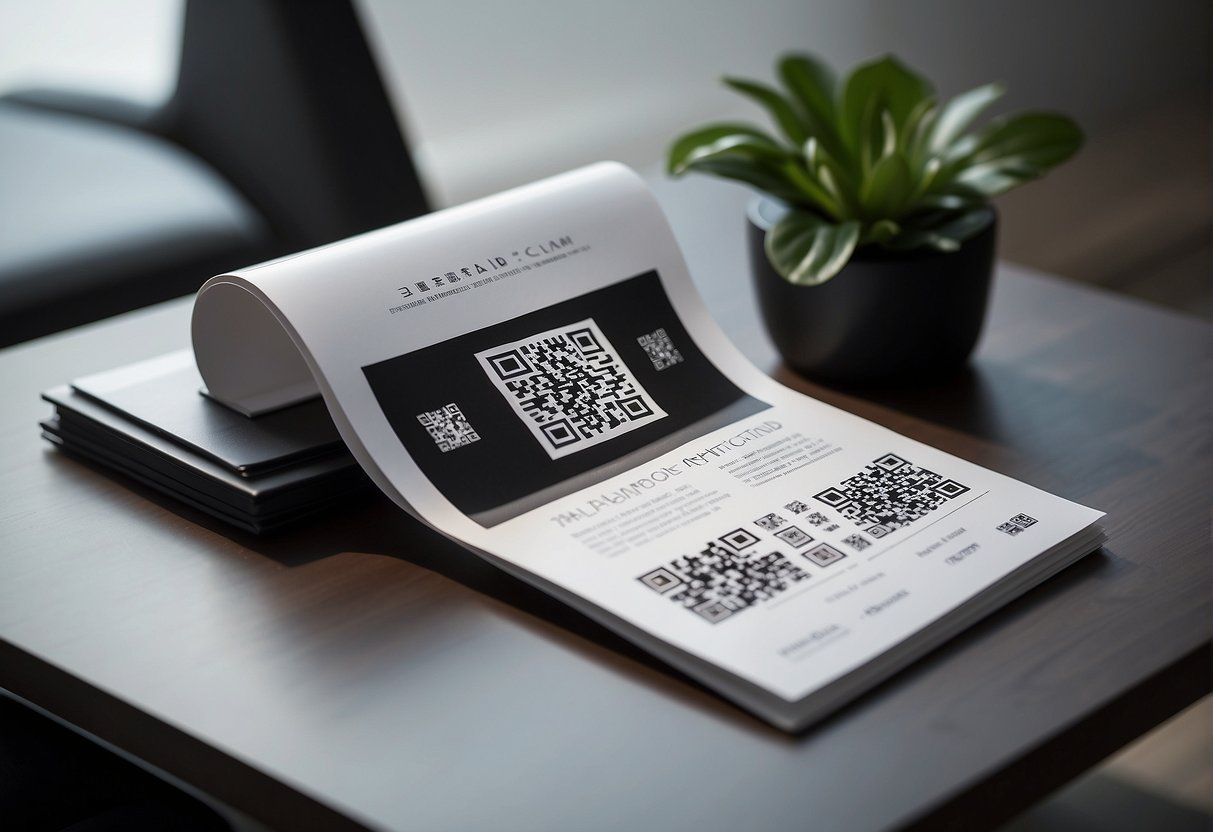
In today’s market, the seamless integration of interactive features into printed catalogs can significantly bolster consumer engagement. Incorporating scannable QR codes and augmented reality (AR) bridges the gap between traditional print media and the interactive digital landscape.
Using QR Codes and Augmented Reality for Engagement
QR codes embedded within catalog pages provide readers with a quick and effortless means to access additional online content. By simply scanning the code with a smartphone , they can be directed to:
- Exclusive online content : Behind-the-scenes videos, product details, and testimonials.
- Social media platforms : Facilitates social sharing and increases online visibility.
- E-commerce : Direct link to the product purchase page, streamlining the shopping experience.
Augmented reality further elevates this by overlaying digital components onto the physical catalog. When a page embedded with AR technology is viewed through a device, it can:
- Showcase products in a 3D space.
- Provide interactive demos.
- Enable virtual try-on.
Combining Print and Digital with Multimedia Elements
Merging print catalogs with multimedia elements creates a cohesive consumer journey from the physical page to the internet . This integrated approach can:
- Offer immediate access to digital content , such as tutorial videos or interviews, incorporating a rich media experience.
- Establish connections with social media campaigns, enhancing engagement and brand presence.
- Include personalized offers or content, enriching the customer experience through targeted marketing.
Crafting a Compelling Call to Action
A call to action (CTA) serves as the tipping point between browsing and engaging. A well-crafted CTA in printed catalogs converts interest into action, moving customers beyond passive reading.
Encouraging Customer Interaction and Engagement
The CTA in marketing materials must be clear and persuasive, encouraging interaction. Messaging should create a sense of urgency while maintaining relevance to the content presented. For printed catalogs, this could mean direct prompts such as “Claim your no-obligation quote today!” or “ Contact us now to start your journey.” Factors to include are:
- Visibility : Ensure CTAs are easily findable and stand out through bolding and color contrasts.
- Immediacy : Phrases like “Limited time offer” promote quick action.
- Clarity : Customers should understand exactly what to do next, be it a phone call, visiting a website, or filling out a form.
- Incentivization : Offering discounts or special deals can motivate customers to act.
Measuring Effectiveness and Conversion Through CTAs
To determine the success of CTAs, companies must be able to measure their impact on conversion rates. Metrics can include the number of responses to direct mail, online engagements from QR codes in printed materials, or calls for a quote. It’s important to track the following:
| Metric | Description |
|---|---|
| Response Rate | Percentage of customers who respond to the CTA. |
| Conversion Rate | Percentage of responses that result in a transaction. |
| Engagement Duration | The time spent by customers engaging with the content. |
| Follow-up Interactions | The rate at which customers proceed to interact further following initial engagement. |
Tools like unique URLs, QR codes, and custom phone numbers can assist in tracking these metrics, providing tangible evidence of the effectiveness of the CTA strategies. Adapting CTAs based on this data enhances future catalogs for stronger customer connections and heightened brand impressions.
Frequently Asked Questions
This section addresses common inquiries about optimizing printed catalogs for brand enhancement. It underscores practical advice on design elements , printing quality, techniques, paper selection, and cost efficiency.
What are the key elements to include in a high-quality printed catalog to enhance brand image?
A high-quality printed catalog should include a clean layout, high-resolution images, consistent brand colors, and compelling content. These elements reinforce brand identity and communicate a professional image.
How can catalog printing quality impact customer perceptions of a brand?
Catalog printing quality directly influences customer perceptions, associating the feel of the paper and the clarity of print with the brand’s standards. Premium quality printing signals an attention to detail and a commitment to excellence.
What printing techniques ensure the highest quality for brand catalogs?
Techniques like offset printing, CMYK color model, and varnishes ensure sharp imagery and vibrant colors. These methods deliver precision and consistency, essential for high-end brand catalogs.
What are the considerations for choosing the right paper for printed catalogs?
When choosing paper for printed catalogs, consider weight, finish, and texture. Heavier paper conveys luxury, while matte or glossy finishes can enhance visuals. The right choice depends on the brand’s aesthetic and message.
How do printing companies like Courier Printing Company enhance brand catalogs?
Companies such as Courier Printing Company boost brand catalogs by providing professional guidance, utilizing advanced printing technologies, and offering a range of customized options to fulfill brand requirements.
What are the cost-effective strategies for producing premium printed catalogs?
To produce premium catalogs cost-effectively, brands should order in bulk, optimize page count, choose a smart paper type, and collaborate closely with printers to maximize budget efficiency without compromising on quality.…





